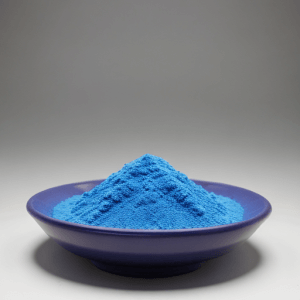
In the complex world of drug development and manufacturing, excipients play a crucial but often overlooked role. These inactive ingredients are essential components of pharmaceutical formulations, serving various functions from improving drug stability to enhancing bioavailability. However, as the pharmaceutical industry continues to evolve, there’s a growing recognition of the importance of excipient purity in ensuring drug safety, efficacy, and quality.
The Purity Imperative
Excipient purity has become a focal point for pharmaceutical companies, regulatory bodies, and excipient manufacturers alike. Dr. Sarah Johnson, a formulation scientist at a leading pharmaceutical company, explains:
“The purity of excipients is not just a matter of quality control; it’s a critical factor that can significantly impact the safety and efficacy of the final drug product. Impurities in excipients can interact with active pharmaceutical ingredients (APIs), potentially altering their chemical structure or biological activity.”
This sentiment is echoed across the industry, with many experts emphasizing the need for stringent purity standards in excipient production and selection.
Impact on Drug Stability and Efficacy
One of the primary concerns regarding excipient impurities is their potential impact on drug stability. Oxidative impurities, for instance, can trigger degradation pathways that compromise the integrity of the API. This is particularly problematic for complex molecules like biologics, which are increasingly prevalent in modern pharmaceuticals[1].
Dr. Michael Lee, a researcher specializing in drug delivery systems, notes:
“We’ve seen cases where trace impurities in excipients have led to unexpected degradation of APIs. This not only reduces the shelf life of the product but can also generate potentially harmful byproducts. It’s a risk we simply can’t afford to take.”
Regulatory Landscape and Quality Standards
Regulatory bodies worldwide are taking notice of the critical role excipient purity plays in drug safety and efficacy. The FDA’s Novel Excipient Review Pilot Program, launched in 2021, is a testament to the growing emphasis on excipient quality and innovation[4].
“The purity of excipients is not just a quality control issue; it’s a patient safety imperative that demands our utmost attention and resources.” – Dr. Emily Chen, Regulatory Affairs Expert
Industry standards are also evolving to address the need for higher purity excipients. The International Pharmaceutical Excipient Council (IPEC) and the Pharmaceutical Quality Group (PQG) have developed Good Manufacturing Practices (GMP) guidelines specifically for excipient production[2].
High-Purity Excipients: A Growing Trend
In response to these challenges and regulatory pressures, the pharmaceutical industry is increasingly turning to high-purity excipients. These specially processed ingredients offer several advantages:
- Enhanced stability of formulations
- Reduced risk of API-excipient interactions
- Improved batch-to-batch consistency
- Potential for higher drug loading in formulations
Companies like Croda Pharma have developed proprietary purification processes to create “super refined” excipients that meet the growing demand for purity[4]. These high-purity products are particularly valuable in the formulation of sensitive drugs, including biologics and other complex molecules.
Case Study: Docetaxel Formulation
A prime example of the impact of excipient purity can be seen in the formulation of docetaxel, a chemotherapy drug used to treat various cancers. Research has shown that using high-purity excipients can significantly improve the recovery and stability of docetaxel in formulations[1].
This case demonstrates how excipient purity can directly influence the quality and efficacy of life-saving medications, underscoring the importance of this often-overlooked aspect of pharmaceutical development.
Future Outlook and Challenges
As the pharmaceutical industry continues to push the boundaries of drug development, the demand for high-purity excipients is expected to grow. However, this trend also presents challenges, including:
- Increased production costs
- Need for more sophisticated analytical techniques
- Potential supply chain disruptions
- Regulatory hurdles for novel excipients
Despite these challenges, industry experts remain optimistic about the future of high-purity excipients. Dr. Johnson concludes:
“Investing in excipient purity is not just about compliance or quality control. It’s about pushing the boundaries of what’s possible in drug development and ultimately delivering better, safer medicines to patients.”
Conclusion
The importance of excipient purity in pharmaceutical formulations cannot be overstated. As the industry continues to evolve, with more complex APIs and stricter regulatory requirements, the role of high-purity excipients will only become more critical. By prioritizing excipient quality and purity, pharmaceutical companies can enhance drug stability, improve efficacy, and ultimately provide better outcomes for patients worldwide.
Sources:
- Drug Development & Delivery. “HIGH PURITY EXCIPIENTS – A Simple Solution to a Complex Problem.”
- Sigma-Aldrich. “Overcoming Excipient Risks and Challenges for Parenteral Formulations.”
- European Pharmaceutical Review. “The central role of excipients in drug formulation.”
- Croda Pharma. “The future of novel excipients.”
- National Center for Biotechnology Information. “The Role of Functional Excipients in Solid Oral Dosage Forms to Overcome Poor Drug Dissolution and Bioavailability.”
Citations:
[1] https://drug-dev.com/high-purity-excipients-a-simple-solution-to-a-complex-problem/
[2] https://www.sigmaaldrich.com/US/en/technical-documents/technical-article/pharmaceutical-and-biopharmaceutical-manufacturing/classical-pharma-manufacturing/excipients-parenteral-formulations
[3] https://www.europeanpharmaceuticalreview.com/article/18434/the-central-role-of-excipients-in-drug-formulation-2/
[4] https://www.crodapharma.com/en-gb/news-and-blog/the-future-of-novel-excipients
[5] https://www.ncbi.nlm.nih.gov/pmc/articles/PMC7284856/

